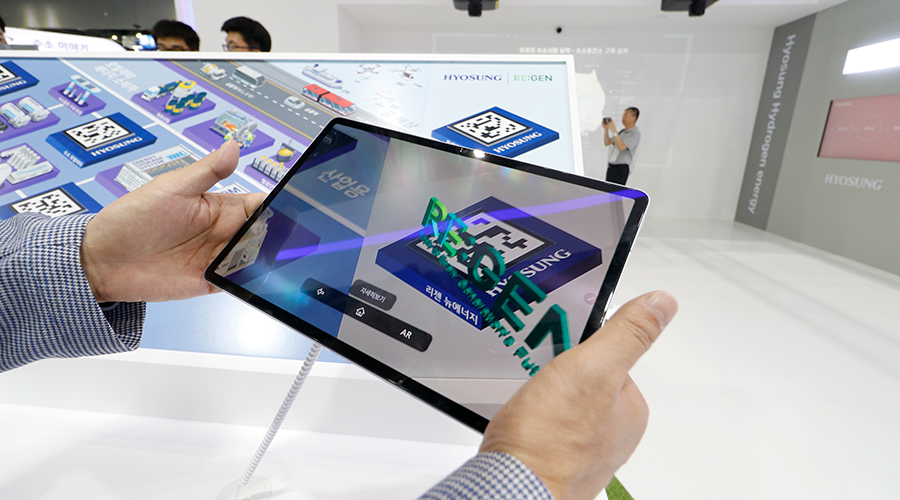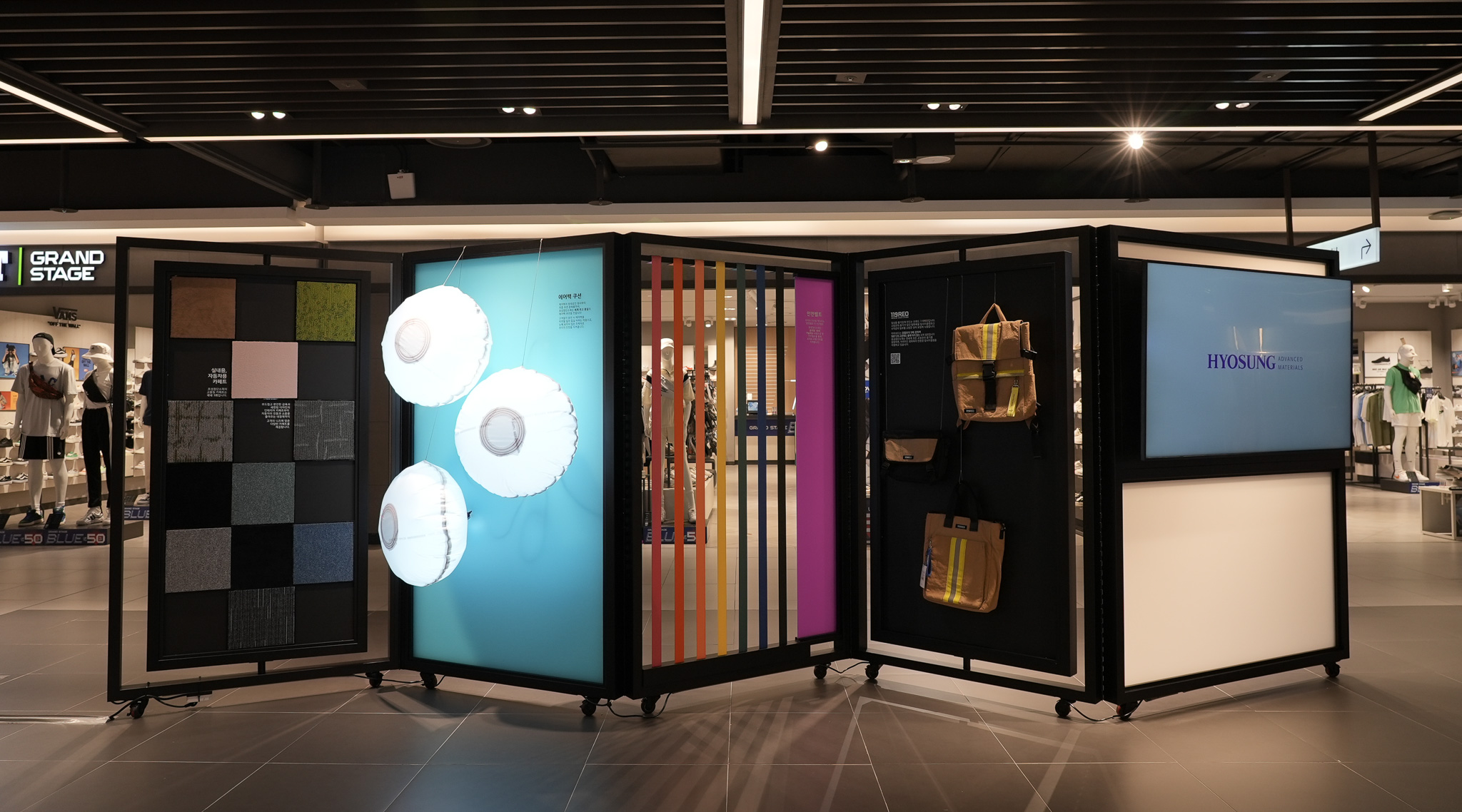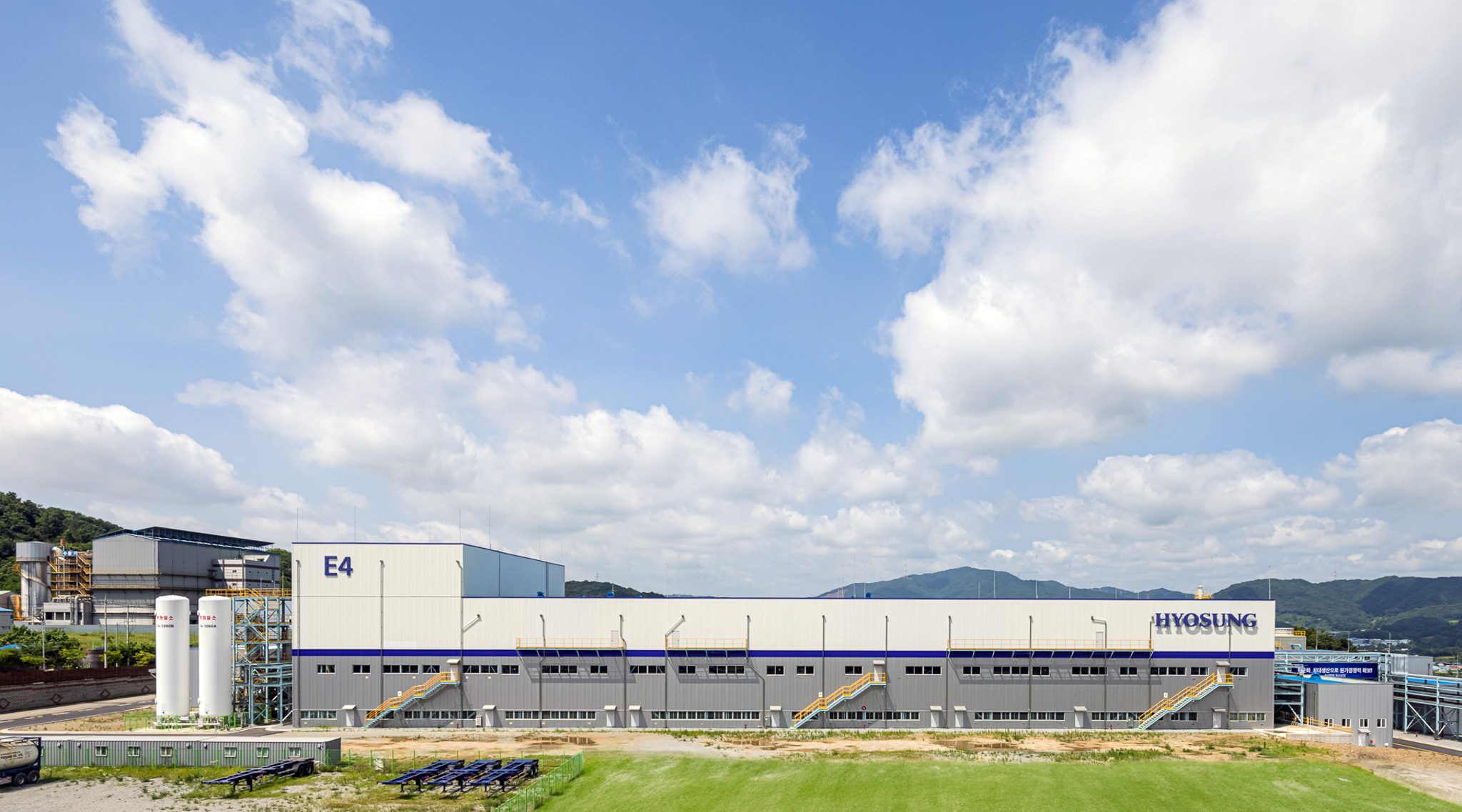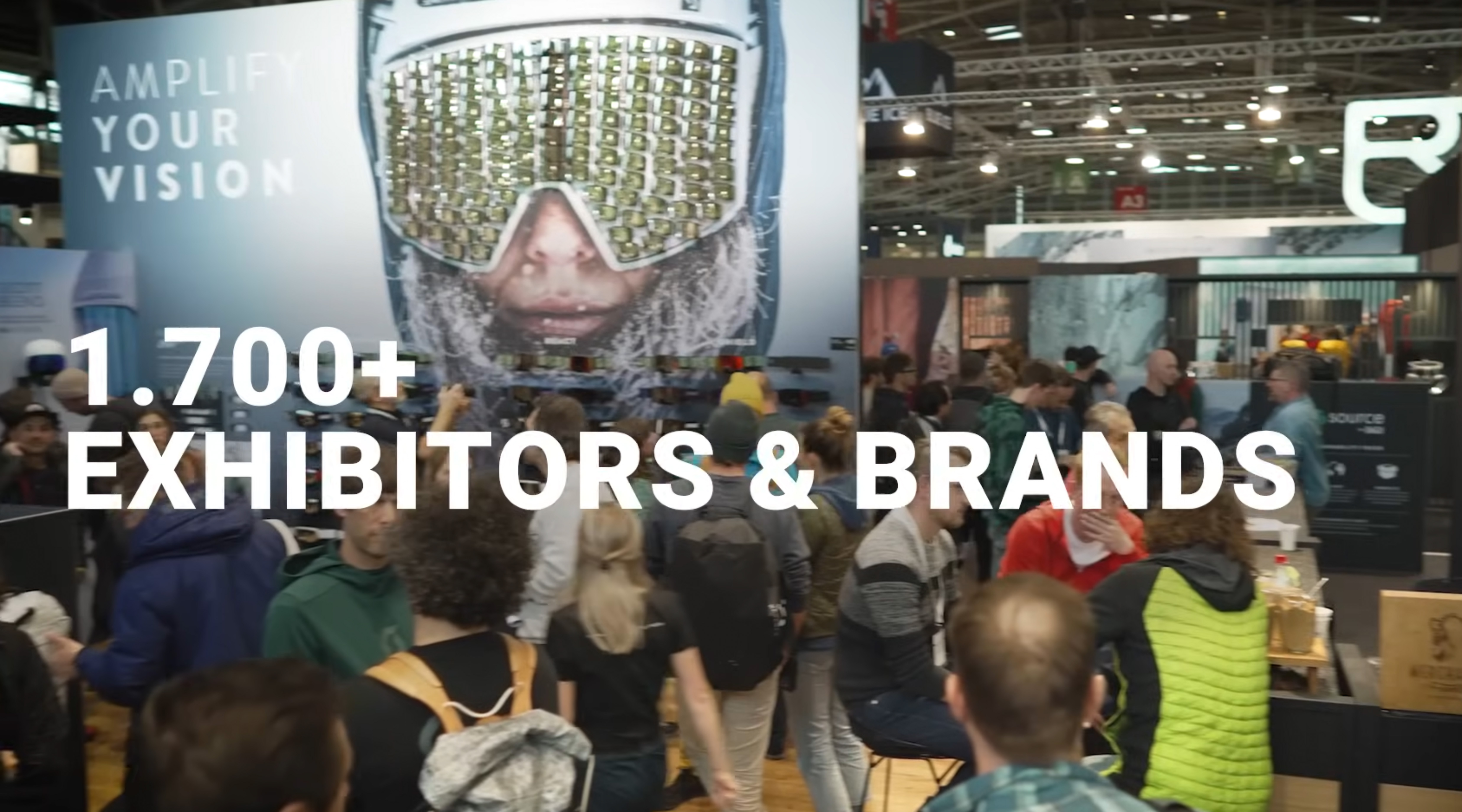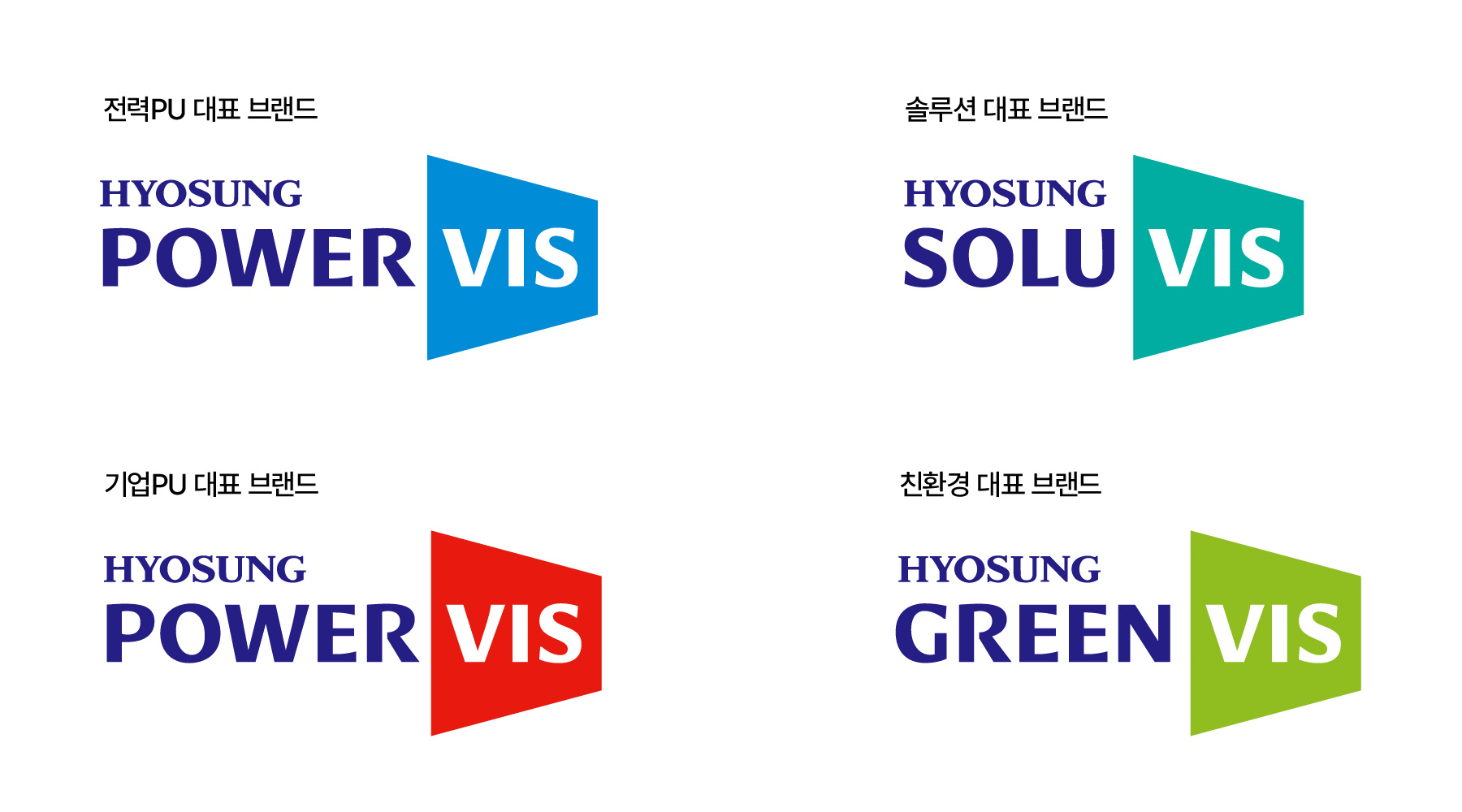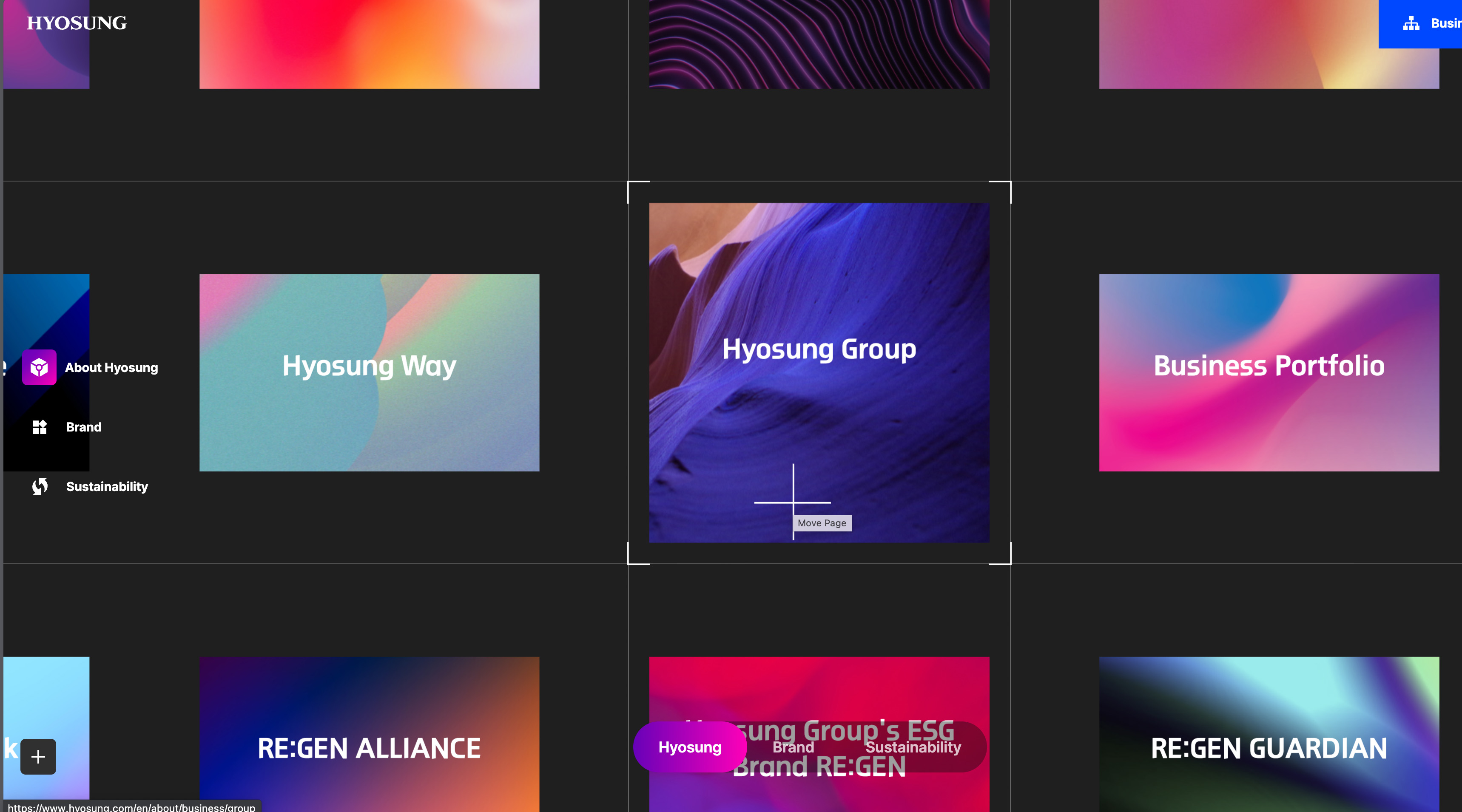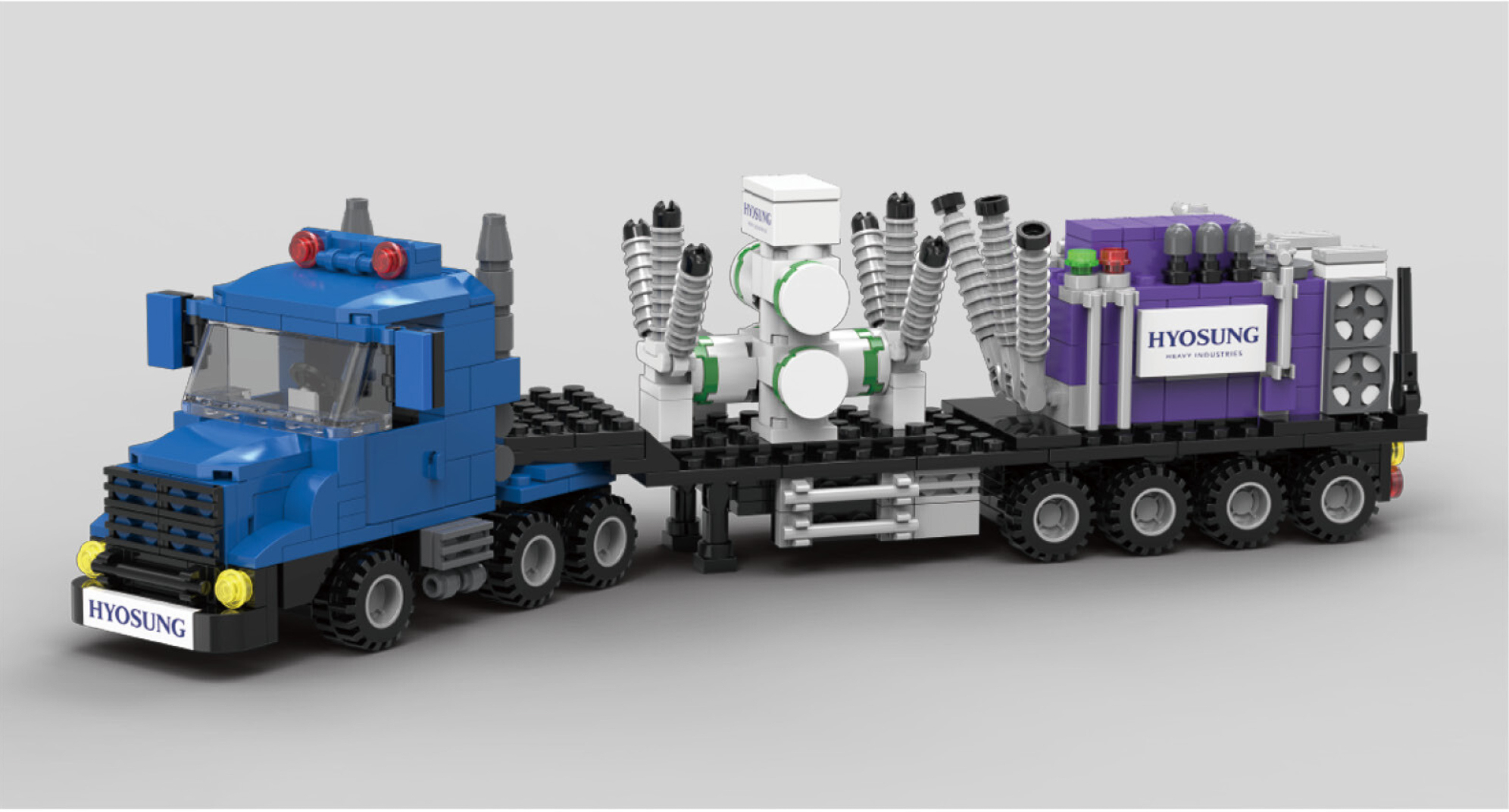Content content
Since 2018, when the South Korean government designated a "hydrogen society" as one of its three major investment areas, there has been rapid research, development, and industrialization of hydrogen as a clean energy source. In line with this trend, HYOSUNG has actively entered the hydrogen field under its corporate ESG brand "RE:GEN". Let’s take a look at the current state and future vision of HYOSUNG’s hydrogen business at H2 MEET 2023, a hydrogen industry exhibition held at KINTEX in Ilsan, Korea from September 13-15, 2023.

▲ HYOSUNG’s Exhibition Space, the Hot Spot of H2 MEET 2023
H2 MEET, the world's largest and South Korea's premier hydrogen industry exhibition, began in 2020. Driven by global interest in the hydrogen business, it has become an authoritative event and conference for the entire hydrogen industry. Companies and research institutions from all over the world show great interest in H2 MEET. It serves as a platform for companies across the globe with core hydrogen technologies to create global business opportunities and share insights on the latest technologies.
MEET 2023, held last September 13-15, was more successful than ever, reflecting the growing interest in the hydrogen industry. It saw the participation of 303 companies from 18 countries and attracted 32,427 visitors during the exhibition period. HYOSUNG’s exhibition space at H2 MEET 2023 became a must-see hot spot for all visitors, proving the rising interest in HYOSUNG as it steps up as a global leader in the hydrogen business.
HYOSUNG’s Innovative Steps as an 'Energy Solution Leader for Tomorrow'
The theme of the HYOSUNG’s exhibition space at H2 MEET 2023 was "Energy Solution Leader for Tomorrow". Upon entering the space, visitors were first greeted by a media wall that introduced the production and use of hydrogen, as well as its storage and transportation structures. This provided a detailed insight into HYOSUNG’s hydrogen business.

▲ Media walls that introduce HYOSUNG hydrogen energy value chain
In HYOSUNG’s exhibition space, visitors could easily understand the company's hydrogen energy value chain through media walls and interactive videos. The exhibit showcased HYOSUNG’s hydrogen production process related to its core chemical/textile business, as well as Hyosung Heavy Industries' goals for stable production of green hydrogen through energy conversion technology. It was also evident that HYOSUNG’s advanced material technologies have enabled a safer and more convenient infrastructure for the supply and sale of hydrogen energy.
The beginning of HYOSUNG’s hydrogen energy value chain begins with the production. HYOSUNG operates Linde Hydrogen Energy and Hyosung Hydrogen, a 50:50 joint venture with Linde, a global leader in industrial gasses from Germany, to produce and supply liquid hydrogen. HYOSUNG plans to produce 15 tons of hydrogen per day and supply it to about 20 stations nationwide by constructing South Korea’s largest liquid hydrogen production plant in Ulsan. Considering the average daily hydrogen consumption for 10,000 hydrogen fuel cell vehicles is 5.4 tons, the scale of producing 30 tons per day, as planned through future plant expansions, is significant.
HYOSUNG is moving toward hydrogen production with minimal environmental impact by leveraging the technological expertise accumulated in the chemical industry, one of the company’s core businesses. Hydrogen is divided into three types based on the production process: gray, green and blue hydrogen. The gray hydrogen, currently the type that HYOSUNG is mainly producing, is derived from a "dehydrogenation process" in which hydrogen is obtained from by-products generated during the production of Hyosung Chemical's products. Polypropylene, one of Hyosung Chemical's flagship products, is produced by applying heat, pressure and catalysts to high-purity propylene to link multiple chains together. The process of converting propylene into polypropylene releases hydrogen, which is then captured to produce gray hydrogen. This hydrogen is also captured from natural gas decomposition processes. Blue hydrogen is produced by capturing the carbon dioxide produced during the gray hydrogen extraction process. On the other hand, green hydrogen is produced by electrolyzing water using electricity generated from renewable energy sources such as wind, water and solar power. Among these, green hydrogen has the lowest carbon emissions.

▲ Interactive experience of HYOSUJNG’s STATECOM solution provided at the exhibition space of H2 MEET 2023
While gray hydrogen currently accounts for the majority of HYOSUNG’s hydrogen production, the company plans to increase the proportion of green hydrogen through ongoing research on relevant technologies and its practical application. A key challenge in this transition is ensuring a stable supply of renewable energy electricity used in the production process. Renewable energy is generated throughout the country with varying voltages and current waveforms. Therefore, maintaining a stable phase of electricity is crucial when consolidating this power for use. HYOSUNG is fully preparing for the expansion of green hydrogen production, including the refinement of its STATECOM solution, which compensates for phase differences depending on the power source.
In addition, Hyosung Heavy Industries has signed an MOA with global gas engine specialist INNIO Jenbacher to develop a hydrogen engine generator with near-zero emissions of carbon and other by-products, aiming for 100% green energy production.
Expanding hydrogen energy infrastructure through convenient and safe environment
In addition to focusing on the extraction and production processes of hydrogen energy, HYOSUNG is also striving to expand the infrastructure of liquefied hydrogen fueling stations to make hydrogen energy convenient and safe to use. Today, HYOSUNG maintains its position as the market leader in South Korea, having supplied numerous liquefied hydrogens charging stations nationwide. The charging stations built by Hyosung Heavy Industries are capable of refueling more than five hydrogen vehicles per hour, contributing significantly to the efficiency of these stations.
Liquefied hydrogen, which can be transported in quantities about 12 times greater than gaseous hydrogen, is superior in terms of supply efficiency. However, there are challenges related to expanding the infrastructure, such as plant construction and ensuring safety. HYOSUNG aims to achieve superior stability and convenience in plant construction by supplying low-temperature, low-pressure liquefied hydrogen instead of high-pressure compression. At present, HYOSUNG operates liquefied hydrogen charging stations in six regions nationwide, including Gwangyang, Jeonju, Gyeongsan, Gimpo, Ulsan and Geoje, with plans to expand to about 30 more stations in the future.

▲ TANSOME, Hyosung Advanced Materials' new material for liquefied hydrogen tankers
To ensure the stability of liquefied hydrogen transportation and storage, Hyosung Advanced Materials has also developed a new material for gas tankers. Traditional steel tankers were cumbersome due to their enormous weight. However, with the introduction of "TANSOME", a high-performance carbon fiber material developed by Hyosung Advanced Materials, it has become possible to create lighter and safer tankers. TANSOME is a new material that contains more than 92% carbon in thin, filament-like shapes, and tanks made of this material have ten times the strength and seven times the elasticity of steel while weighing only one-fourth as much. TANSOME is also used in various products that require high strength, high elasticity and low weight, such as high-pressure tanks and aircraft fuselages.

During the three days of H2 MEET 2023, a large number of visitors, including government officials and industry professionals from around the world, visited the HYOSUNG’s exhibition space, showing great interest in the current status and future prospects of HYOSUNG’s hydrogen business. This keen interest indicates the public's anticipation of a hydrogen society and the realization of its potential. At the core of a hydrogen society is HYOSUNG’s hydrogen energy value chain, which is the result of the organic collaboration of technologies from all HYOSUNG subsidiaries, from hydrogen energy production to the establishment of supply and distribution infrastructure. With the increasing demand for environmentally friendly energy, HYOSUNG’s hydrogen business infrastructure is expected to shine in various aspects of society. HYOSUNG‘S hydrogen business will continue to meet the diverse needs of customers in various fields.
